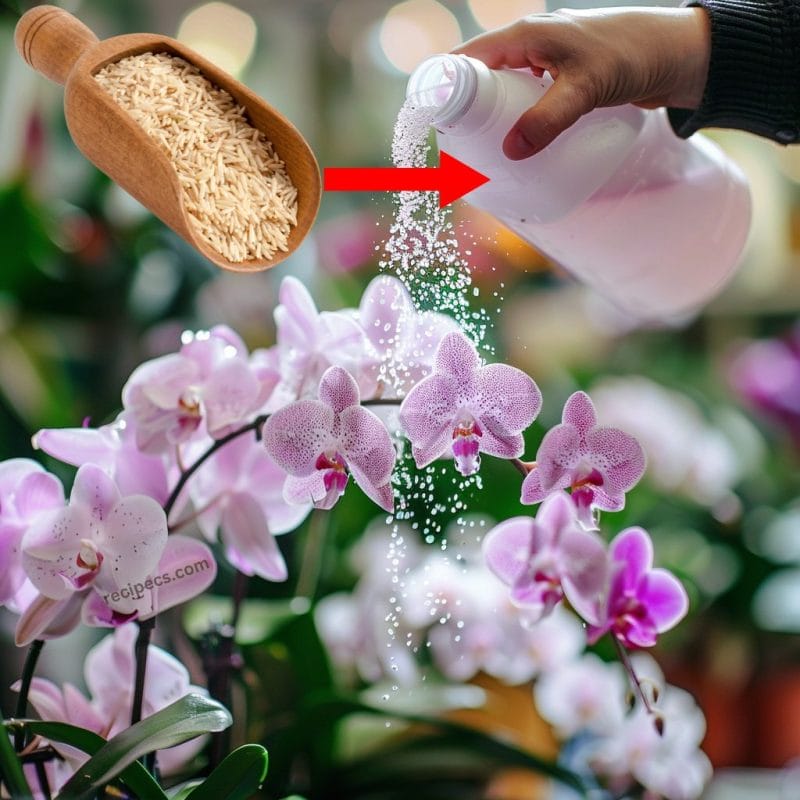Would you like to save this?
Orchids are known for their stunning and exotic blooms, which can bring a touch of elegance to any space. However, achieving profuse and long-lasting blooms requires proper care and attention, particularly when it comes to fertilization. By understanding the needs of your orchid and applying the right techniques, you can encourage your plant to produce vibrant and healthy flowers.
Understanding Orchid Nutrient Needs
Orchids, like all plants, require certain nutrients to grow and bloom. These nutrients are typically divided into macronutrients and micronutrients.
- Macronutrients:
- Nitrogen (N): Essential for leaf and stem growth.
- Phosphorus (P): Promotes strong root development and flowering.
- Potassium (K): Supports overall plant health and disease resistance.
- Micronutrients:
- Calcium (Ca): Important for cell wall structure.
- Magnesium (Mg): Vital for chlorophyll production.
- Sulfur (S): Integral in protein synthesis.
- Iron (Fe), Manganese (Mn), Zinc (Zn), Copper (Cu), Boron (B): Needed in smaller amounts but crucial for various physiological processes.
Choosing the Right Fertilizer
Selecting the correct fertilizer is crucial for the health of your orchid. Most commercial orchid fertilizers are balanced, providing a mix of N-P-K (Nitrogen-Phosphorus-Potassium) and other micronutrients. A common recommendation is a balanced 20-20-20 fertilizer, but during the flowering season, a higher phosphorus content (like 10-30-20) can be beneficial to stimulate blooming.
Types of Fertilizers:
Water-Soluble Fertilizers: These are easy to use and can be applied during regular watering.
Slow-Release Fertilizers: These release nutrients over a period of time and reduce the frequency of fertilization.
Organic Fertilizers: Made from natural sources, they are less likely to cause nutrient burn but might be less concentrated than synthetic options.
Fertilization Schedule
A consistent fertilization schedule can significantly impact the health and blooming cycle of your orchid.
- Growing Season (Spring and Summer):
- Fertilize every two weeks with a balanced fertilizer (20-20-20).
- Ensure you water your orchid before applying fertilizer to avoid root burn.
- Blooming Season (Fall and Winter):
- Switch to a fertilizer with higher phosphorus (10-30-20) to promote flower development.
- Fertilize monthly during this period, as the plant’s nutrient requirements decrease.
- Rest Period:
- Some orchids require a rest period after blooming where fertilization should be reduced or stopped to allow the plant to recuperate.
How to Fertilize Orchids
Materials Needed
:
- Balanced water-soluble fertilizer (20-20-20)
- Bloom-boosting fertilizer (10-30-20)
- Measuring spoons or a dropper
- Watering can
Steps
:
- Water Your Orchid: Start by watering your orchid thoroughly. This prepares the roots to absorb the fertilizer without causing damage.
- Mix the Fertilizer: Dilute the fertilizer according to the instructions on the package. Generally, this will be about 1/4 to 1/2 teaspoon of fertilizer per gallon of water.
- Apply the Fertilizer: Pour the diluted fertilizer solution around the base of the plant, ensuring it reaches the roots. Avoid getting fertilizer on the leaves or flowers, as this can cause burns.
- Rinse with Clear Water: After fertilizing, it’s a good practice to rinse the potting medium with clear water to prevent salt buildup, which can harm the orchid over time.
- Monitor and Adjust: Keep an eye on your orchid’s response to the fertilization. Adjust the frequency and concentration based on the plant’s health and growth.
Tips for Successful Orchid Fertilization
Use Rainwater or Distilled Water
: Tap water can contain chemicals that may harm orchids. Using rainwater or distilled water helps prevent mineral buildup in the soil.
Avoid Over-Fertilization: More is not always better. Over-fertilizing can lead to root burn and nutrient imbalances. Always follow the recommended dosage.
Monitor Plant Health: Regularly check for signs of nutrient deficiency (yellowing leaves, poor growth) or excess (burnt leaf tips, salt buildup).
Flush the Medium: Every few months, flush the potting medium with plain water to remove accumulated salts from fertilizers.
Adjust for Orchid Type: Different orchids have varying nutritional needs. For example, Phalaenopsis orchids may need more frequent feeding compared to Cattleya orchids, which can thrive with less frequent fertilization.
Variations and Substitutions
Homemade Fertilizers
: For an organic approach, you can make your own fertilizers using ingredients like banana peels (rich in potassium) or eggshells (rich in calcium). Blend and dilute these in water before applying.
Compost Teas: These are nutrient-rich liquids made from soaking compost in water. They can provide a balanced nutrient profile and beneficial microbes.
Conclusion
Proper fertilization is key to ensuring your orchid blooms profusely and remains healthy. By understanding the specific nutrient requirements of your orchid, choosing the right fertilizer, and adhering to a consistent fertilization schedule, you can enjoy beautiful, long-lasting blooms. Remember, balance and moderation are essential—over-fertilizing can be just as detrimental as under-fertilizing. With care and attention, your orchid can become a stunning centerpiece in your home or garden, showcasing its vibrant flowers for all to admire. Happy growing!







